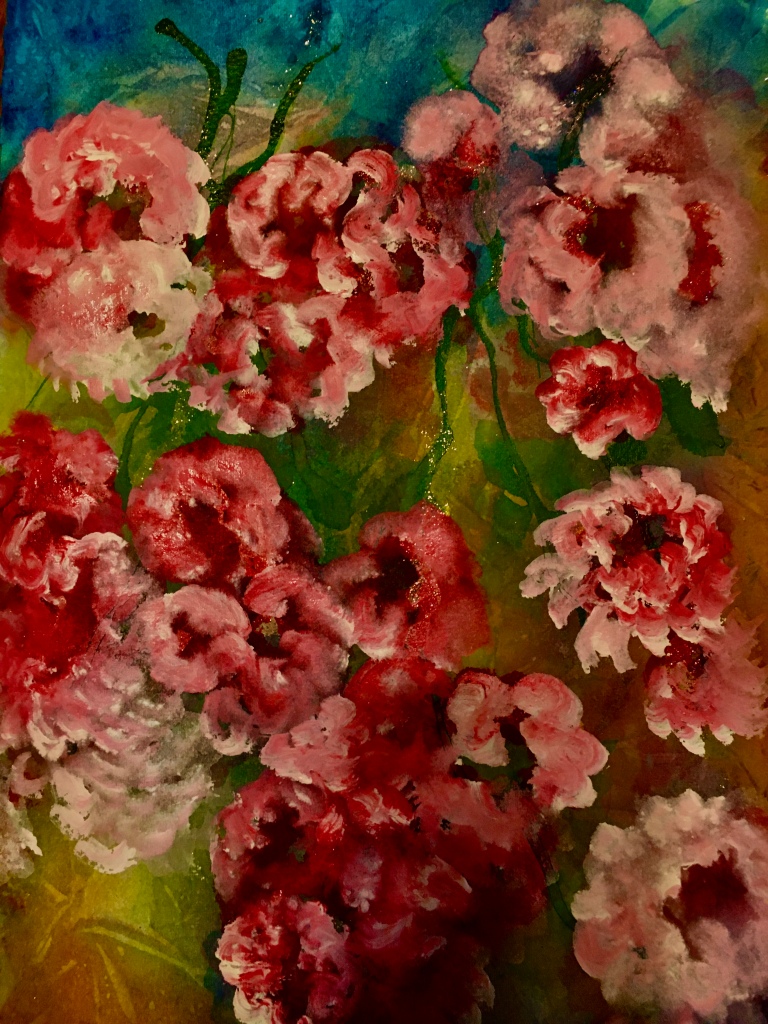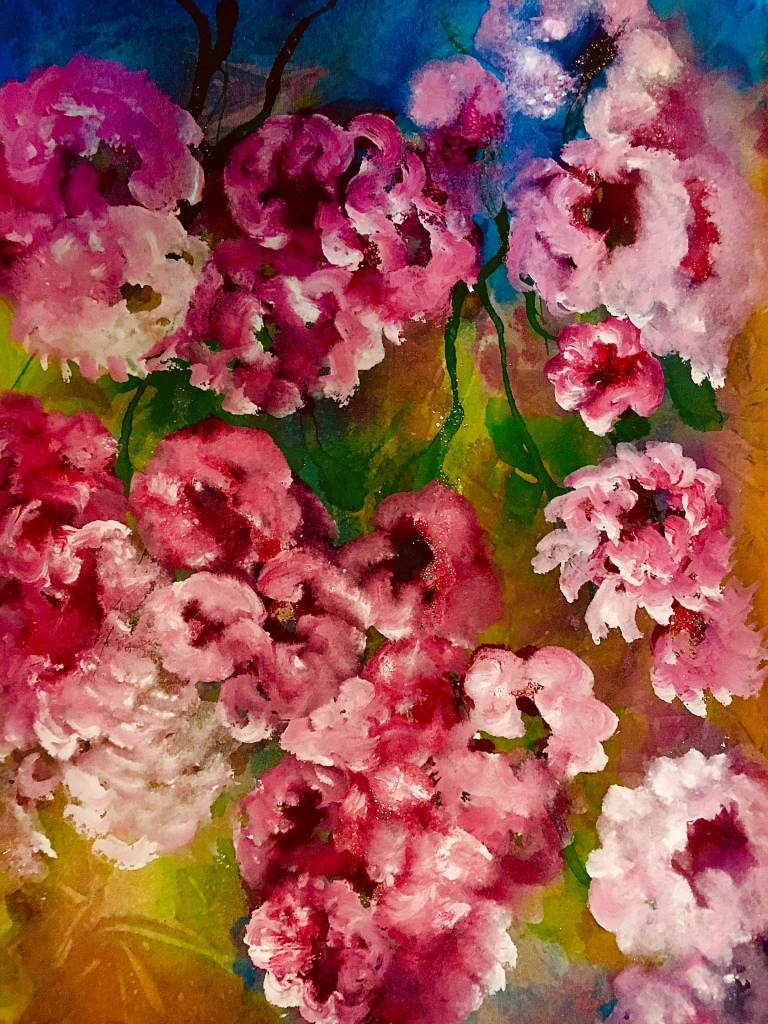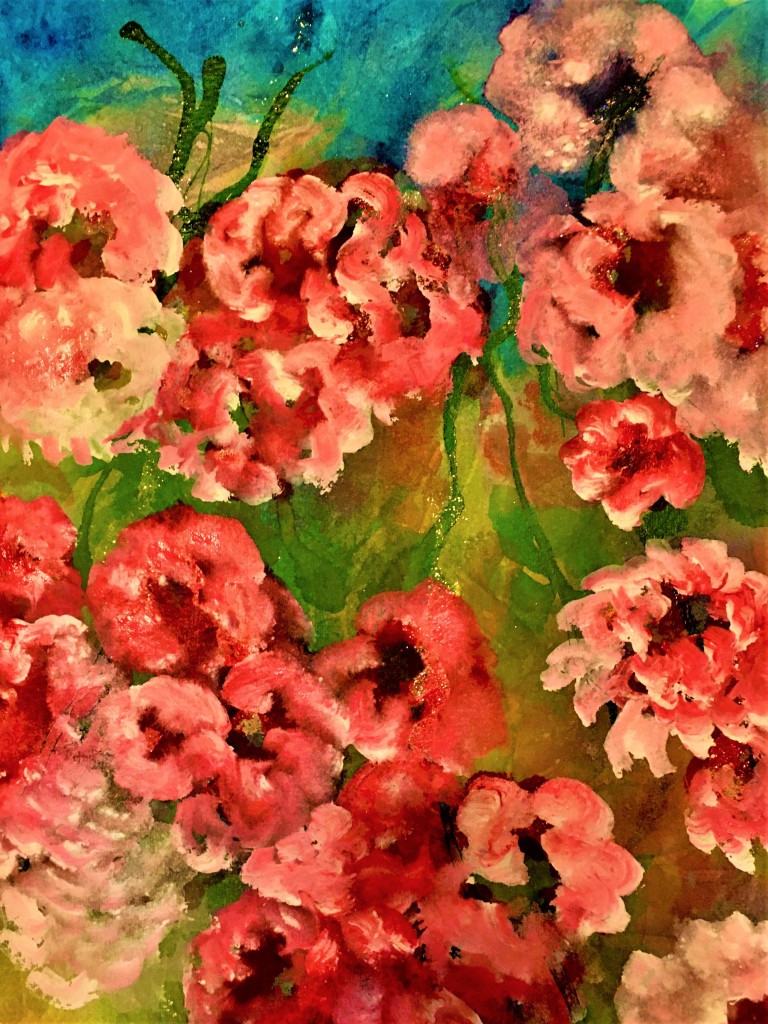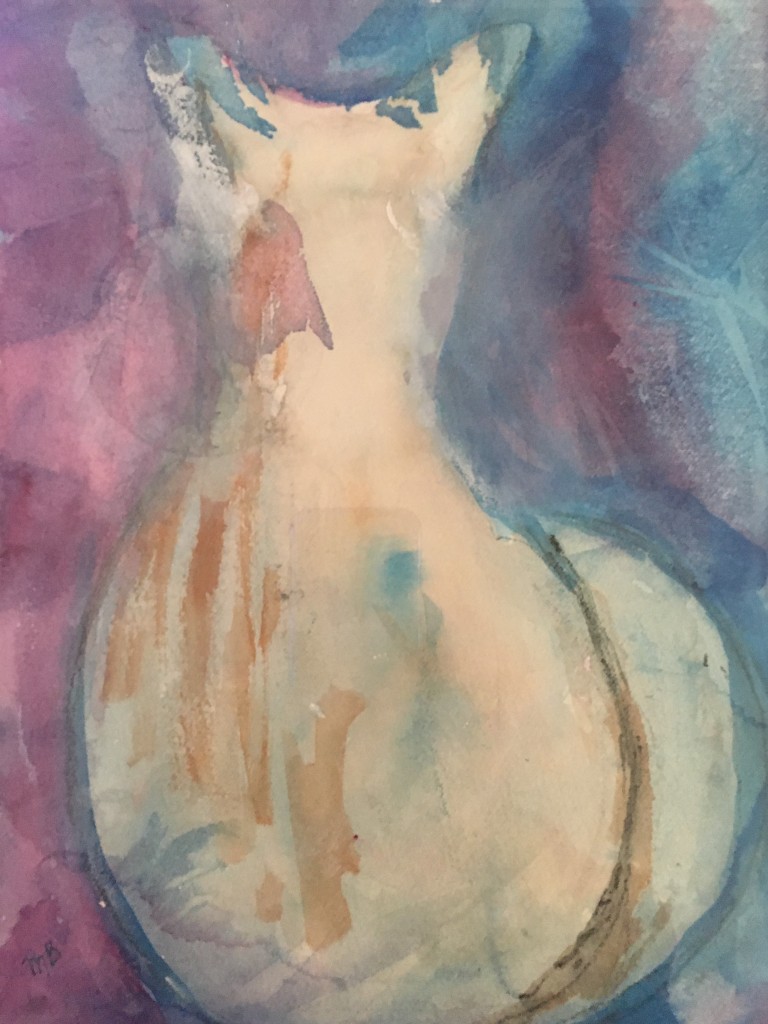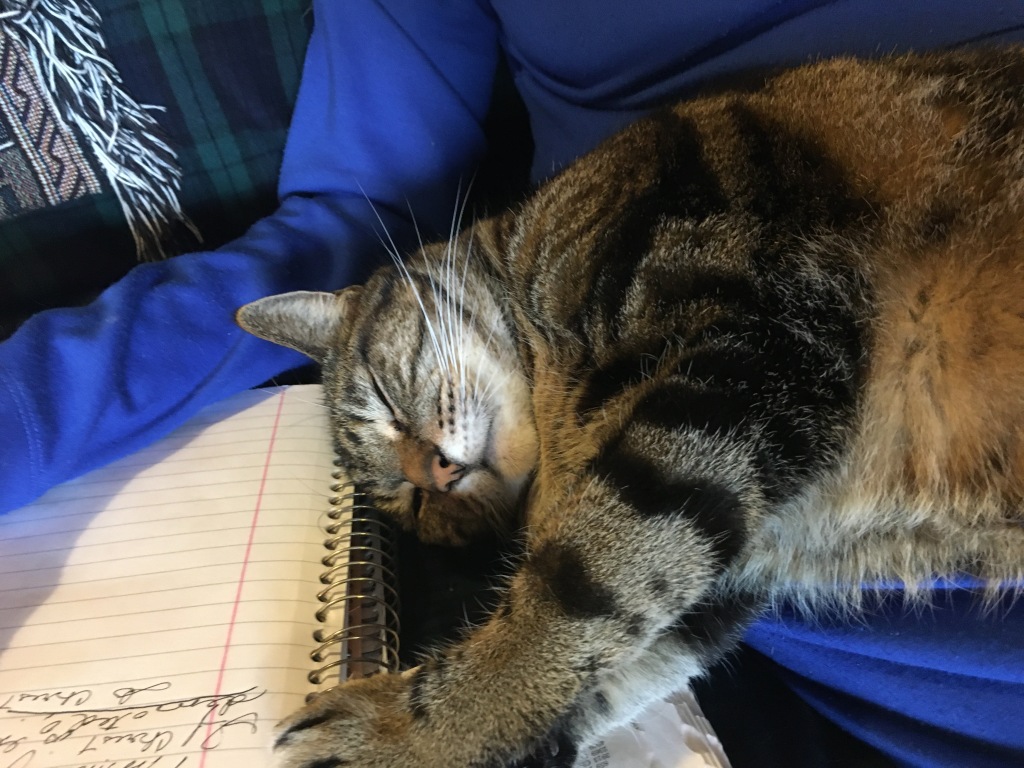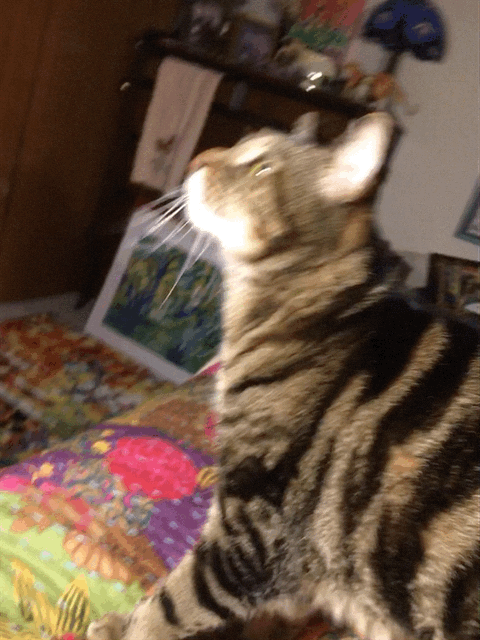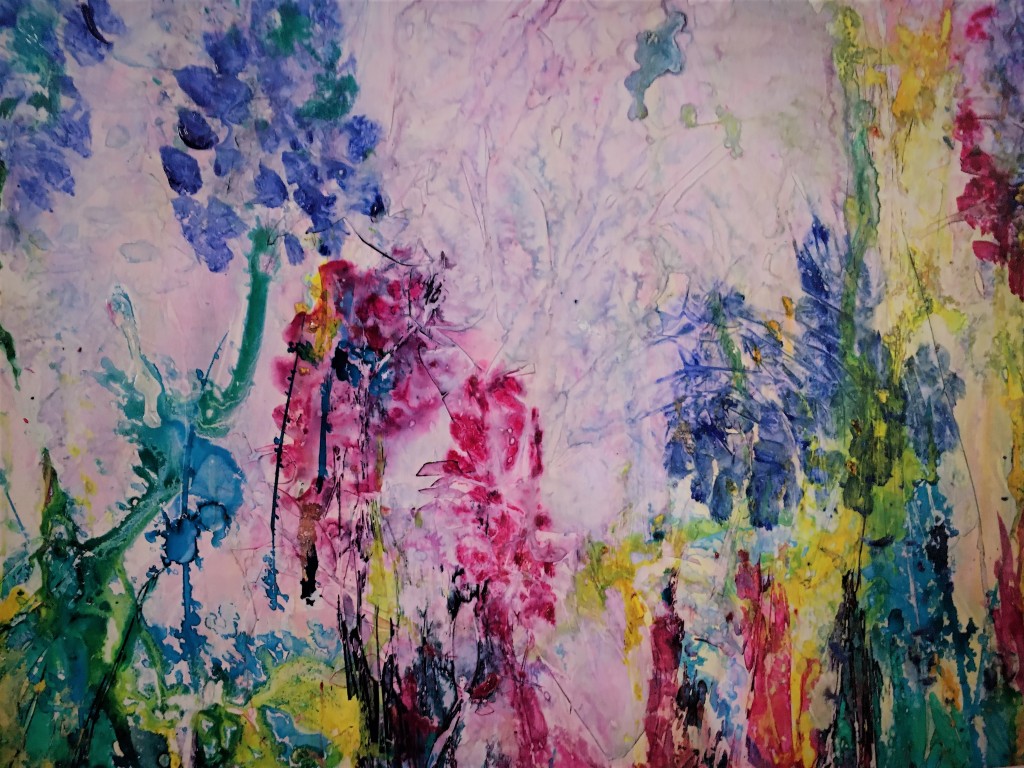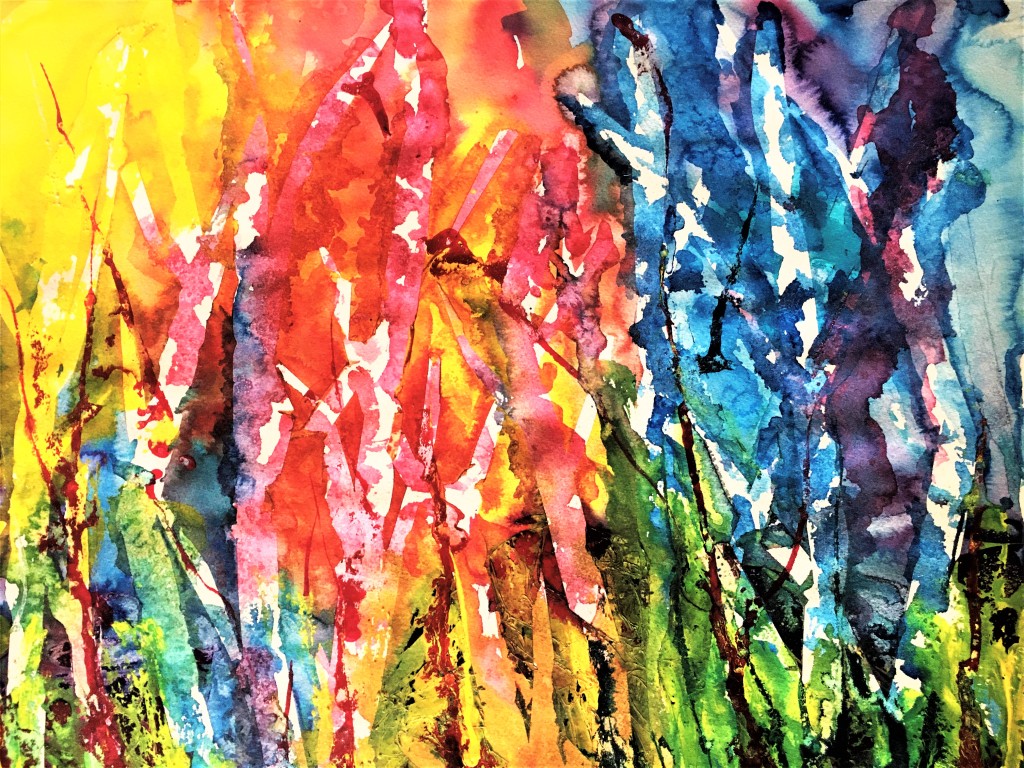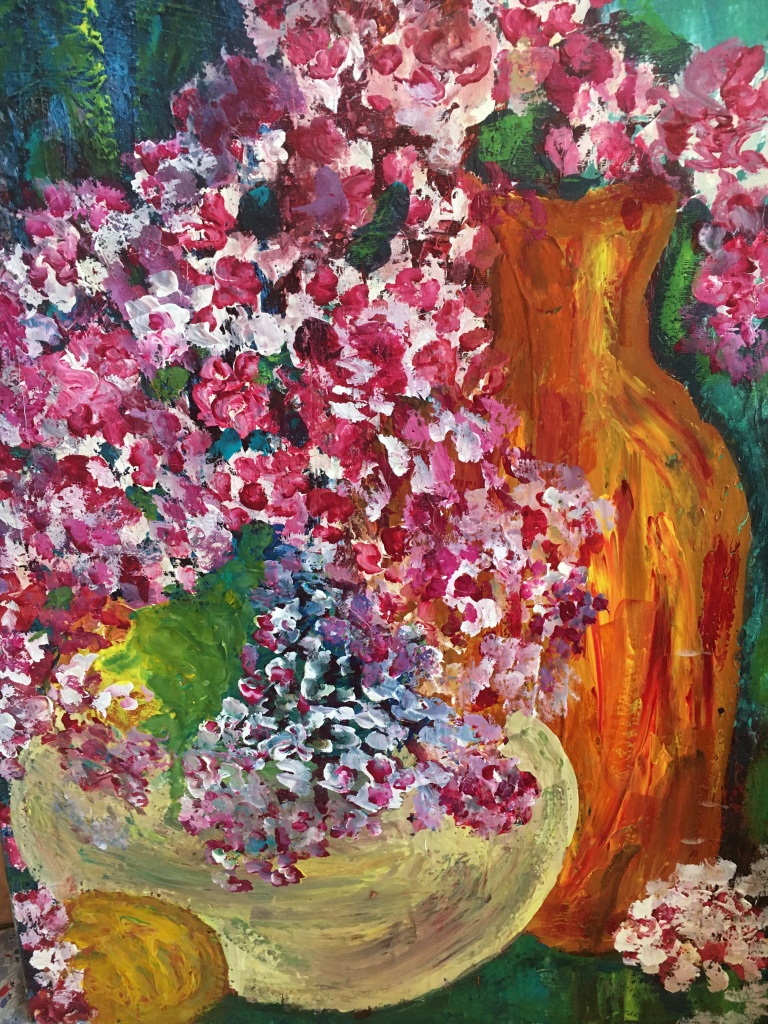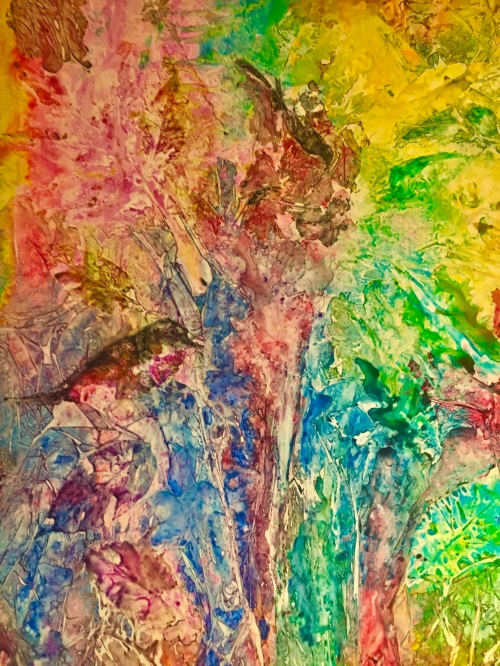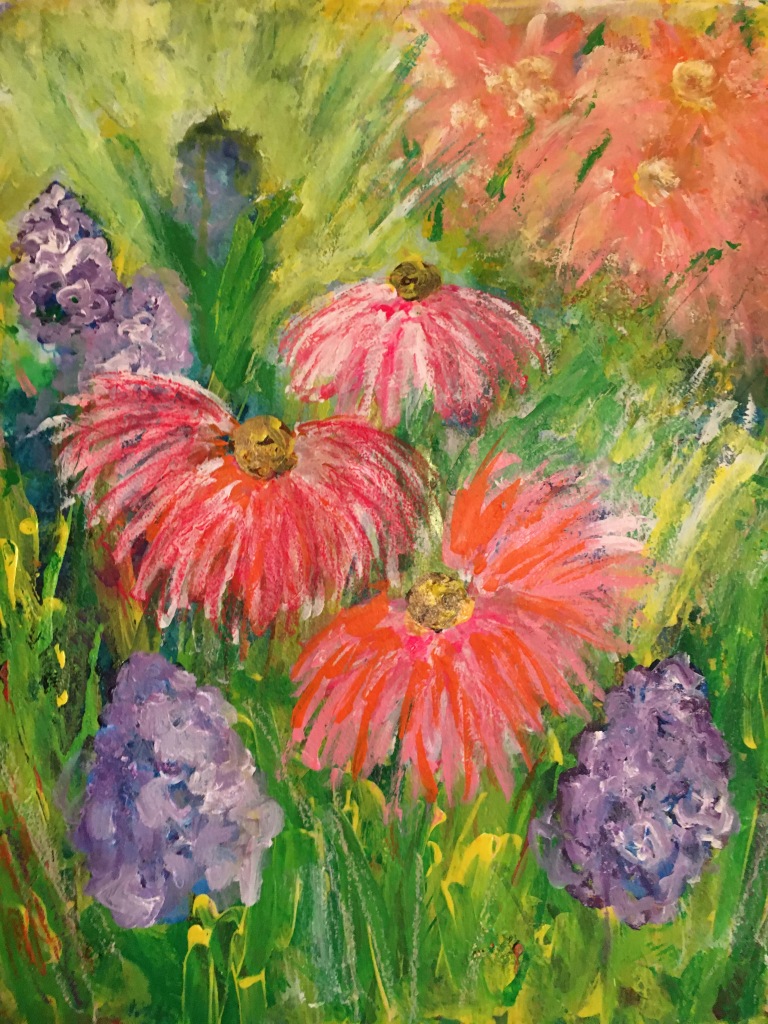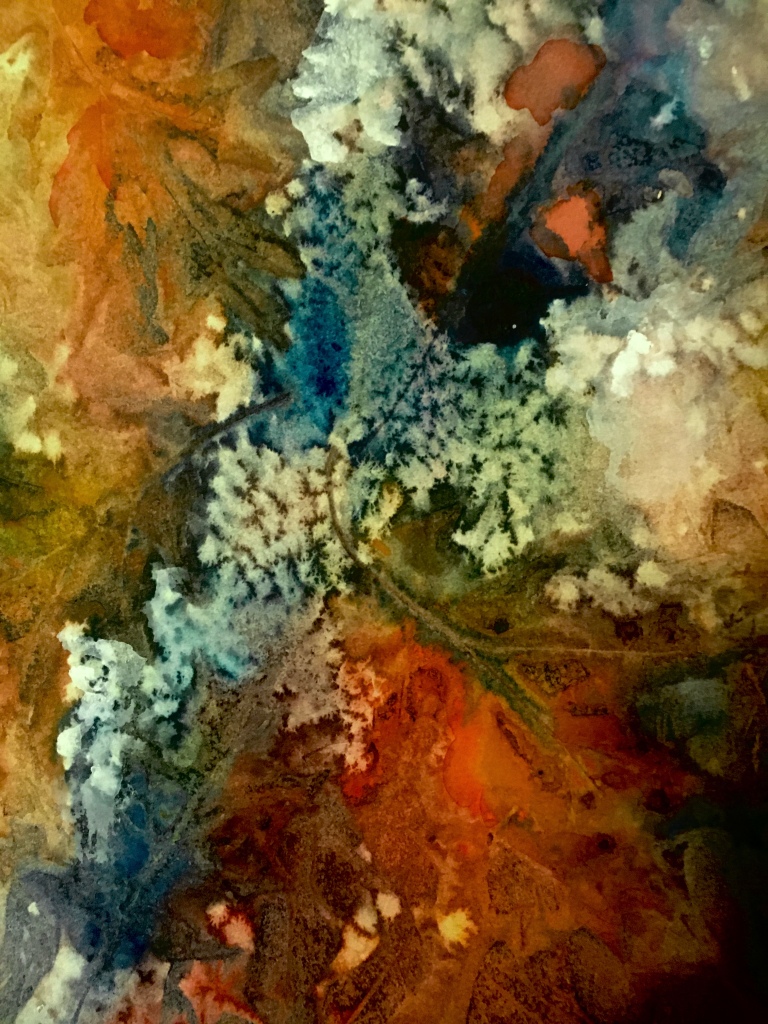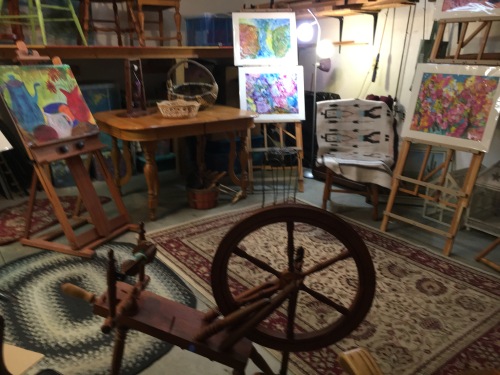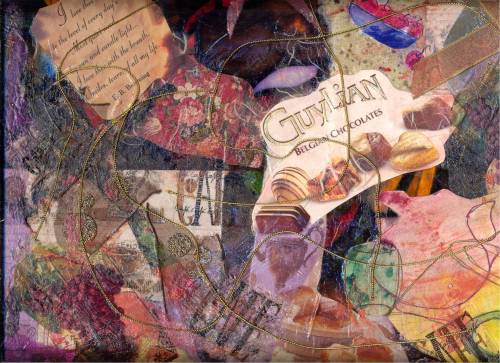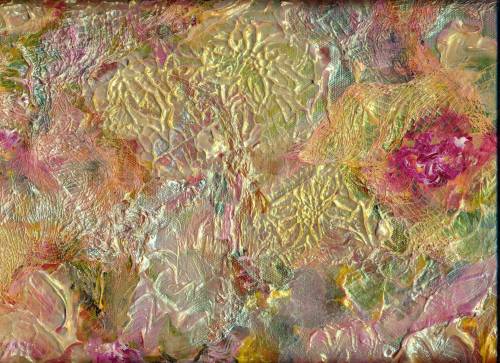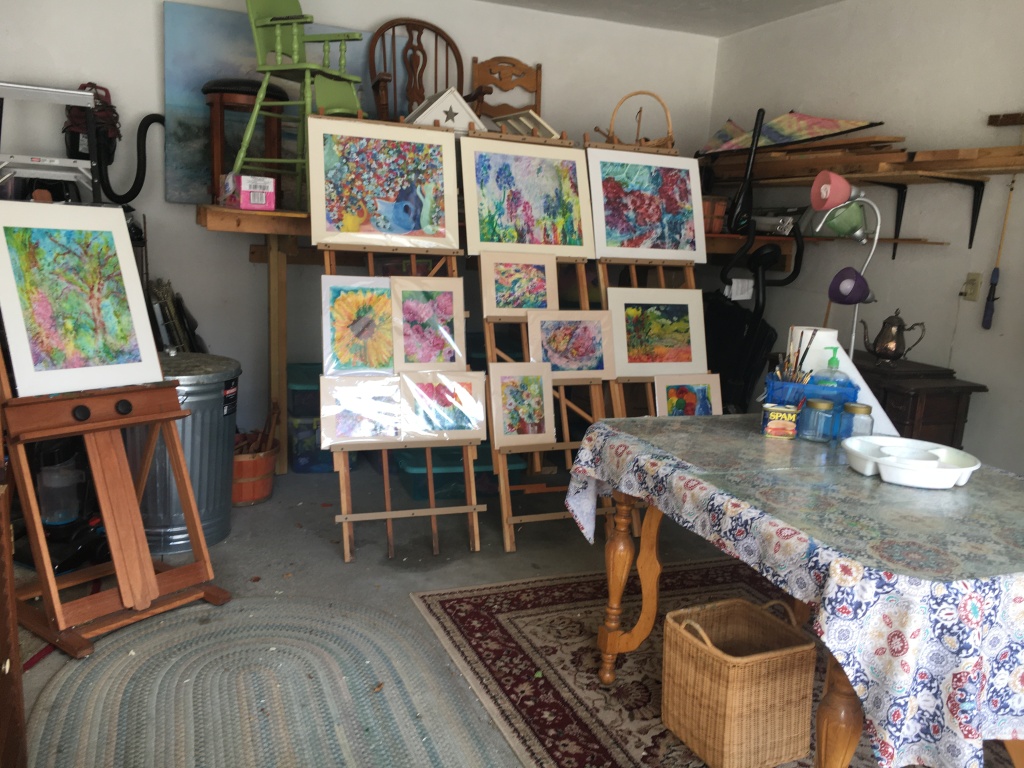
. . . and time for a warm weather studio in what used to be the garage. Wonderful on rainy days, with the garage door up and that glorious fragrance of rain without getting wet!
Blessed with 14 grandchildren and 20 great-grandchildren*, I love to hostess art days in the garage. We make huge messes and have a blast. With Papa Murphy’s Pizza just down the road, it can be a double blast!
Here is a fun and really lovely project that most anyone can enjoy–3 or 4 year-olds as well as adults. It’s really a collage–but I call it PAPER NAPKIN ART. You need paint (acrylic works well for this project), paper napkins, a gallery wrap canvas panel (I prefer the ones with a cradle of at least 1 and 1/2 inches deep) and an acrylic spray fixative.
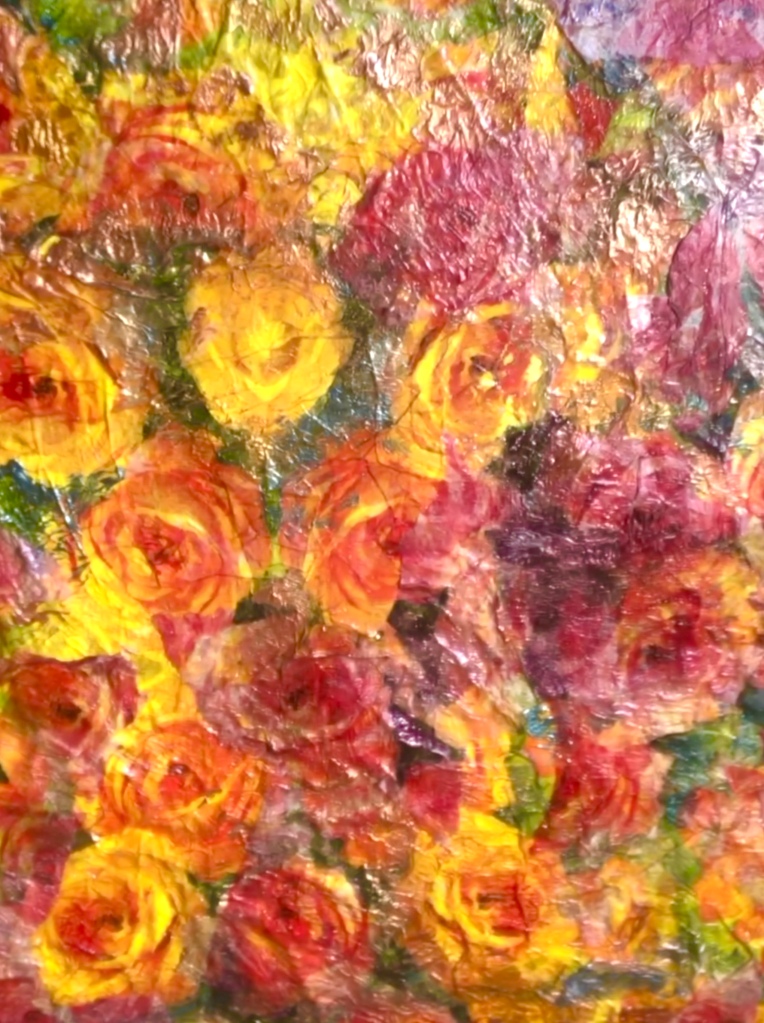
On the back of most every paper napkin, there is a backing sheet–at least 1, and sometimes 2 as in the case of the above pictured lovely rose-patterned napkins which I found on AMAZON.
Peel the backing sheet or sheets off the napkin. When there are 2 papers this takes patience, but they will peel off.
When as many napkins as you need to cover your panel are ready, then paint the panel with colors of your choice. I like to use more than 1 color, as the colors will show through the napkins beautifully and I enjoy the variety and contrast. In the above sample, I used yellow and a soft coral paint. The original roses on the napkins were a very light rose color..
Apply the napkins while the paint is very wet, and press the paper into the paint with some kind of a roller. I have a brayer, but HEY–you could use a bottle or even that thingy the toilet paper roll fits on.
When the surface is dry (this often takes time on a Wisconsin summer day) you can add flourishing touches of paint, if so desired. Otherwise wait a day or two more, and when you are certain your piece is totally dry, spray with the fixative. Gloss and matt are available; I always go for 2 or 3 coats of the glitz.
Here is another sample–a different napkin and paint colors. The options and varieties are endless!
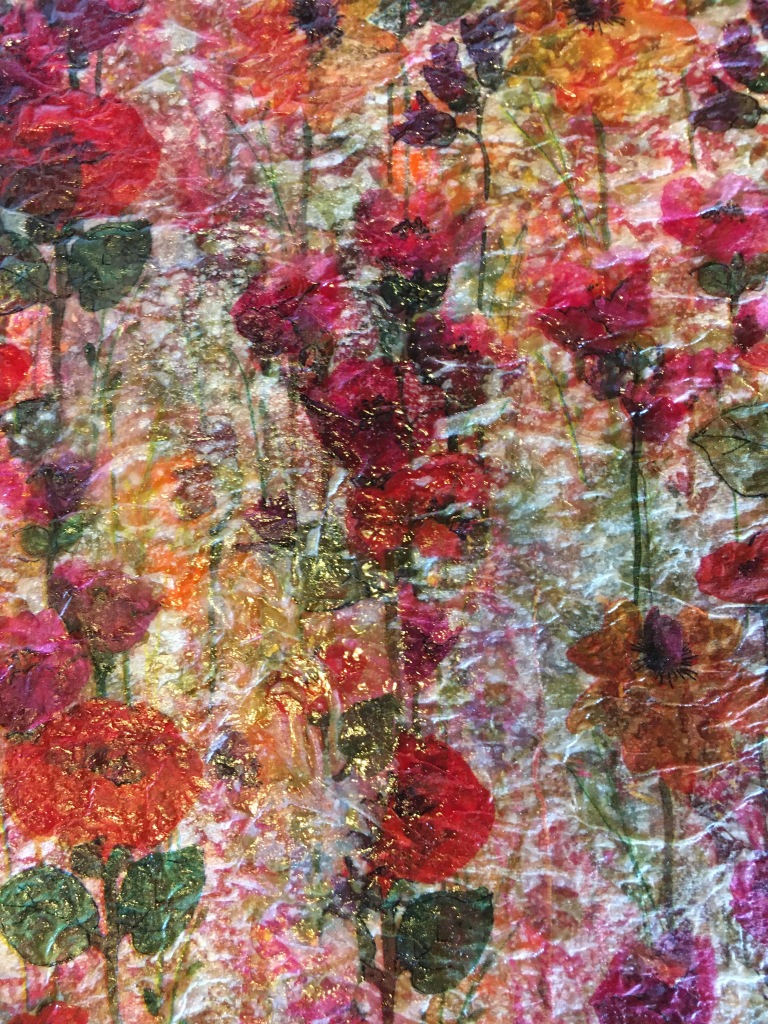
TOO MUCH FUN! Happy Spring!
*Our great-grandchildren range from age 1 to 18. The 18 year-old, Elijah, has just completed his Basic Training at Ft. Benning Ga–and will finish Infantry Training in mid July. (I just had to brag a bit. Very proud of our soldier!)
Margaret L. Been — May 6th, 2021

